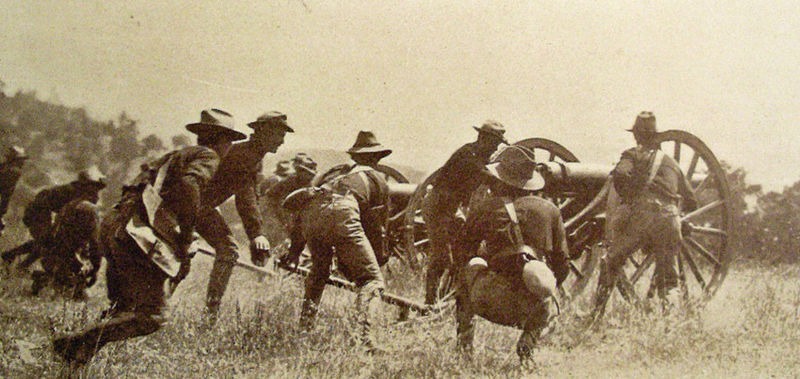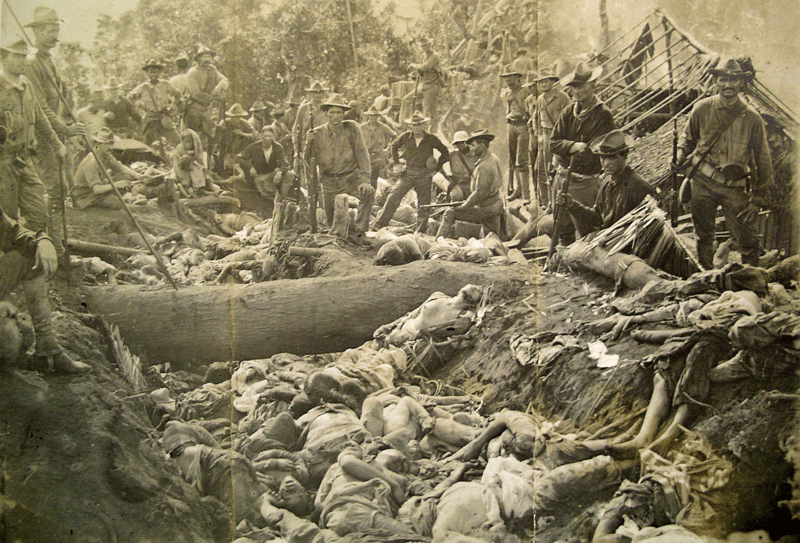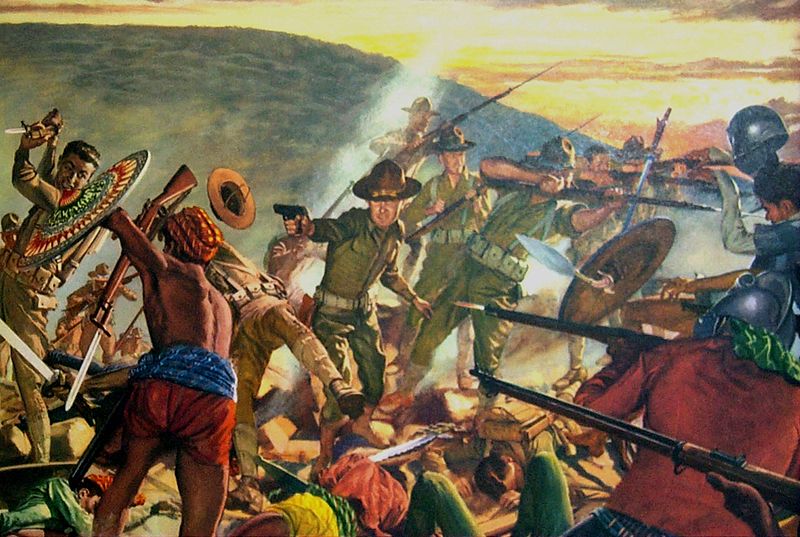The Moro Rebellion was a critical period in Philippine history. It was characterized by a lingering and intricate war between the Moro people and the United States. The rebellion emerged from the resistance of the Muslim Moro inhabitants of the southern Philippines against American colonial rule, and it spanned from the late 19th century to the early 20th century. If you are interested to learn more about its historical and cultural significance, it is important to understand the events that unfolded during this rebellion.
From the initial clashes to the major battles and the subsequent consequences, this article aims to delve into the key events that shaped the course of the Moro Rebellion. Through learning about these events, we can get insights into the challenges faced by both the Moro people and the American forces, their impact on the Philippines, and their lasting implications. That is why in this post, we are going to give you more information on the important events that occurred during the Moro Rebellion.
1899 – 1903: The Early Clashes Between American Military and the Moro Forces
This period was characterized by sporadic confrontations, attempts at pacification, and the establishment of civil governance in the Moro region. After the United States assumed control of the Philippines from Spain, clashes erupted between the American forces and Moro fighters. The Moro resistance was largely distributed, with different groups engaging in erratic attacks against American troops. Their early encounters demonstrated the determination and fierce fighting skills of the Moro warriors. These include the Battle of Bud Dajo, which we will later on discuss in this article.
The American government attempted to build civil governance and win over the Moro population despite being aware of the difficulties in suppressing the Moro rebellion. In order to administer the Moro region under the American administration, they established the Moro Province in 1903. To persuade the Moros toward American rule, efforts were undertaken to set up institutions of learning, infrastructure, and law enforcement.
The Moro Rebellion’s initial phase provided the foundation for the later stages of the battle. It highlighted the Moro fighters’ perseverance and combat skills as well as the challenges the American forces faced in crushing the rebellion.
1904 – 1913: Consolidation of American Control
From 1904 to 1913, American forces implemented different measures to establish authority, assimilate the Moro population, and ensure stability in the newly established Moro Province, which was a governmental entity encompassing the Moro-dominated areas of Mindanao and the Sulu Archipelago. This administrative division attempted to apply policies particular to the Moro people and to concentrate American rule. The governor-general, who later assumed leadership of the province, had considerable authority over the territory.
In 1904, in order to maintain law and order, the Moro Constabulary was created by the American authorities. The mission of this paramilitary group, which was made up of Moro soldiers under American direction, was to uphold peace, put down uprisings, and carry out American policies. In order to conduct military operations against Moro fighters and guarantee adherence to the American government, the Moro Constabulary was essential.
The Moro community was to be incorporated into Philippine civilization by the United States through an assimilationist approach. The development of schools, particularly in urban areas, aimed to expose Moro children to American education and ideals. This approach promoted English language competency and American traditions while undermining traditional Moro cultural practices and beliefs.
The American government made infrastructural investments in the Moro region in an effort to advance it. To enhance living circumstances and promote economic development, roads, bridges, educational institutions, and healthcare facilities were built. These programs attempted to promote support for American governance by highlighting its advantages.
The United States concentrated on establishing its dominance over the Moro region during this time. American efforts to establish dominance and rule the Moro people can be seen in the creation of the Moro Province, the Moro Constabulary, and assimilation practices. However, because traditional Moro power structures and cultural identity were suppressed, these actions also planted the seeds of unrest and rebellion.
1914 – 1922: Resurgence of Moro Resistance and the Cotabato Campaign
The Moro fighters regrouped under new leadership after a brief hiatus in their rebellion and stepped up their resistance to American rule. The Moro villages were rallied by prominent individuals like Datu Ali, who also organized attacks against American forces. In the face of American attempts to stifle their sovereignty, the Moro resistance showed tenacity and resiliency.
From 1914 to 1915, the Cotabato Campaign occurred. It was a significant military operation launched by the United States to suppress the Moro Rebellion in the Cotabato region of Mindanao. General John J. Pershing’s American soldiers launched a number of military offensives against the Moro fighters. The Moros’ guerilla warfare tactics were combined with traditional military techniques during the conflict, such as infantry assaults and artillery barrages. The Cotabato Campaign’s fights were fierce and drawn out, and both sides suffered a lot of losses.
The American government put tactics in place in addition to the military campaign to put an end to the rebellion. This involved tightening control over the Moro populace, putting in place spy networks to learn more about Moro fighters, and stepping up pacification activities. In order to gradually reduce the Moro resistance’s capacity to resist, American authorities aimed to cut off their financial and material assistance as well as their communication channels.
This stage of the Moro Rebellion showed the Moro combatants’ tenacity and resolve in their fight against American rule. The American soldiers fought the Moro militants in fierce engagements during the Cotabato Campaign, which brought to light the complexity and difficulties they faced.
1923 – 1935: The Suppression of the Rebellion
The Moro resistance showed tenacity and tenacity throughout this time despite earlier setbacks. The followers of many Moro leaders gathered and renewed attacks against American forces were begun. These rebel groups attacked the American troops by using guerilla tactics, clever ambushes, and terrain expertise.
The United States increased its military campaigns and strategies in response to the resurgent Moro opposition. In order to attack Moro’s defenses, American soldiers staged assaults that included coordinated combat attacks, artillery, and air support. They wanted to isolate the Moro fighters, sever their ties to their allies, and weaken their fighting prowess.
A turning point in the fight was the Moro Rebellion’s final phase. Under the weight of American military operations and a reduction in support from nearby towns, the Moro resistance slowly grew weaker. The Moro region experienced a brief period of relative stability once the uprising was eventually put down. The rebellion’s effects, however, were significant and long-lasting.
This period marked the end of a long and tumultuous conflict. However, even when the rebellion was suppressed, its impact resonated far beyond the immediate military engagements. The legacy and consequences of the rebellion continue to shape the relationship between the Moro people, the Philippine government, and the broader context of cultural and political rights in the Philippines.
The Significant Battles That Occurred During the Moro Rebellion
During the many years of war between the Moro people and the American forces, many battles have happened. Below are some information about the significant battles that occurred during the Moro Rebellion:
1906 – Battle of Bud Dajo
The Battle of Bud Dajo, also known as the First Battle of Bud Dajo or the Moro Crater Massacre, was a counterinsurgency action fought by the United States Army against the Moro people. It occurred in March 1906, during the Moro Rebellion in the southwestern Philippines. It took place during the final days of General Leonard Wood’s term as governor of the Moro Province.
This battle was a major clash between the American military forces and the Moro fighters in the town of Bud Dajo, on the island of Jolo. There were around 800 Moro villagers who sought refuge on top of Bud Dajo, which is one of the cinder cones that make up the island of Jolo and part of the Jolo Volcanic Group in the Philippines. They were then bombarded by artillery and assaulted by American troops under the order of General Leonard Wood, which was led by Colonel J.W. Duncan.
The battle resulted in heavy casualties, with around 600 to 1,000 Moros killed, including women and children. With this, the Battle of Bud Dajo became a controversial event that highlighted the intensity and brutality of the conflict.
1913 – Battle of Bud Bagsak
Another battle that occurred during the Moro Rebellion phase of the Philippine-American War was the Battle of Bud Bagsak. It happened between June 11 and 15, 1913, and it took place on the island of Jolo.
Datu Amil and 1,500 warriors negotiated with the Sultan of Sulu and other Moros supporting the Americans in March 1913, promising to hand over their weapons. Two months later, he told the Americans to come and fight after retreating to Bud Bagsak with his whole population of 6,000–10,000 people in the Lati Ward.
General John J. Pershing developed a strategy of holding the army in their island garrisons in the hopes that the women and children would descend from the mountain cottas after observing that the Moros only retreated to Bud Bagsak when provoked by government troops. At the same time, Pershing discreetly deployed his army to Bun Bun, a coastal community three and a half miles from Bud Bagsak.
The Moros, led by Sultan Jamalul Kiram II, fortified themselves on the slopes of Mount Bagsak. The U.S. forces launched a determined assault, utilizing artillery and infantry attacks. The battle resulted in a decisive American victory, with around 600 to 900 Moro casualties.
1921 – Battle of Payao
In 1921, a battle occurred in the Cotabato region of Mindanao, when the Moro resistance led by Datu Ali fought the American occupation fiercely. The American forces launched an offensive attack against the Moro positions, which led to heavy fighting. Even with their numerical disadvantage, the Moros displayed remarkable bravery. However, the American troops still prevailed. The Battle of Payao marked a significant event in the later phase of the Moro Rebellion.
1924 – Battle of Tiruray Hills
The Battle of Tiruray Hills happened in 1924. It was part of the American campaign to suppress the Moro resistance in the Cotabato region. Tiruray Hills was a strategic location that provided a stronghold for the Moro fighters. In this battle, the American forces launched an assault through the use of artillery, machine guns, and infantry attacks. It was an intense and long battle, but the American troops managed to remove the Moro fighters and secure the area.
1930 -1932 – Battle of Lanao
From 1930 to 1932, a series of battles took place in the Lanao region of Mindanao. These battles involved the Moro fighters, led by Datu Ampuan, resisting American control. In this battle, the Moros used guerilla tactics and utilized their knowledge of the rugged terrain to their advantage. In response, the American military conducted several operations to suppress the Moro resistance. For several years, these battles occurred. However, there is no clear victory for either side. Over time, the Moro resistance slowly weakened.
These are some of the most significant battles that occurred during the Moro Rebellion. These are only a fraction of the numerous engagements that happened during those times. Each battle played an important role in shaping the outcome of the conflict. These also had lasting consequences for the Moro people and their relationship with the United States.
Conclusion
For one to fully appreciate the Moro Rebellion’s historical and cultural significance, one must be aware of the significant events that took place throughout the struggle. It illuminates the difficulties that the Moro people and the American forces encountered, the effects of the rebellion on the Philippines, and the long-lasting effects it has had on later wars and interpersonal relationships.
The Moro Rebellion serves as a reminder of the need to address the aspirations and concerns of diverse communities as the Philippines continues its journey toward peace, reconciliation, and inclusivity. This is done in an effort to create a society that respects cultural diversity, encourages self-determination, and fosters harmony among its citizens. We hope this article helped you learn more about the important events that occurred during the Moro Rebellion.




